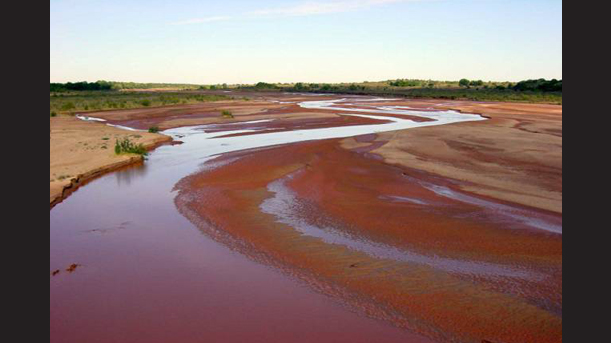Farm & Ranch
Red River Crops Conference set for Jan. 27-28 in Childress

By: Kay Ledbetter
Writer: Kay Ledbetter, 806-677-5608, [email protected]
Contacts: Stan Bevers, 940-552-9941, [email protected]
CHILDRESS – Texas and Oklahoma officials along the Red River will address the issues of importance to regional farmers and ranchers on both sides of the state line at the annual Red River Crops Conference on Jan 27-28.
The two-day event is designed to provide crop production information for Southwest Oklahoma and the Texas Rolling Plains, said Stan Bevers, Texas A&M AgriLife Extension Service agricultural economist in Vernon.
The event will begin with registration from 7:45-8:15 a.m. Jan. 27 and continue through 4:15 p.m. on each day at the Fair Park Auditorium, 1000 Commerce St. in Childress, Texas.
Preregistration by Jan. 23 is encouraged, Bevers said. The fee is $25 for one or both days.To register, print the form from http://agrisk.tamu.edu/. Make checks payable to the Red River Crops Conference and mail to 100 N.W. Ave. E, Courthouse Box 9, Childress, TX. 79201-2351.
In-season and summer crops will be featured on Jan. 27. Discussion topics will include a long-term weather forecast, canola and other specialty crops, a discussion of the 2014 farm bill decisions, wheat management, stocker cattle and a market outlook.
Cotton will be featured on Jan. 28, with topics including market outlook, variety discussions, herbicide options, seed treatments and disease management, irrigation and new technology from industry representatives.
Bevers said AgriLife Extension and Oklahoma Cooperative Extension joined together to conduct the first and “very successful” conference last January. The conference alternates between Oklahoma and Texas.
In the Red River region, obstacles can include limited water and land resources, and weather extremes, such as hot and dry summers and bitterly cold winters, he said. Producers also find themselves managing pastures of both introduced and native grass for cattle operations, and crop mixes such as cotton, wheat, and grain and forage sorghum. More recently, producers have considered incorporating canola, guar and sesame into their production.
For more information, contact a local Extension office in either Texas or Oklahoma, or call Bevers at 940-552-9941, extension 225.
-30-
Farm & Ranch
Acorn Toxicity

By Barry Whitworth, DVM, MPH
With the prolonged drought, most pastures in Oklahoma end up in poor condition. With the lack of available forage, animals may go in search of alternative foods.
If oak trees are in the pastures, acorns may be a favorite meal for some livestock in the fall. This may result in oak poisoning.
Oak leaves, twigs, buds, and acorns may be toxic to some animals when consumed.
To read more, pick up a copy of the November edition of North Texas Farm & Ranch magazine, available digitally and in print. To subscribe by mail, call 940-872-5922.

Farm & Ranch
Silver Bluestems

By: Tony Dean
There are a handful of grasses on North Texas grazing lands ranchers need to know, not because they are highly desirable, but rather because they are not of much value. I call them “decom” plants, which is am acronym for “Don’t Ever Count On Me.” Silver bluestem is a “decom” grass.
Silver bluestem is a perennial which grows in all areas of Texas. It can survive in almost all soil types, and in full sun conditions or in semi shade. It grows up to three feet tall and is easily recognized with the presence of the white fuzzy seed head. Also, one of the identifying characteristics of Silver bluestem is a bend in the stems at each node, causing the plants to take on a rounded shape as they mature.
To read more, pick up a copy of the November edition of North Texas Farm & Ranch magazine, available digitally and in print. To subscribe by mail, call 940-872-5922.

Farm & Ranch
Meanwhile Back At The Ranch

By: Rayford Pullen
Fall is here which means winter is closing in on us and before we officially get into winter, we need to make sure our factories are either producing or will be producing in a few months.
We have been pregnancy testing our cows this fall and if they are not bred or nursing a calf, we are bidding them adios. With annual costs somewhere between $900.00 and $1,000.00 per cow, those cows not producing a live weaned calf are costing us quite a bit.
To read more, pick up a copy of the November edition of North Texas Farm & Ranch magazine, available digitally and in print. To subscribe by mail, call 940-872-5922.
-

 Country Lifestyles2 years ago
Country Lifestyles2 years agoScott & Stacey Schumacher: A Growth Mindset
-

 Country Lifestyles8 years ago
Country Lifestyles8 years agoStyle Your Profile – What your style cowboy hat says about you and new trends in 2017
-

 HOME8 years ago
HOME8 years agoGrazing North Texas – Wilman Lovegrass
-

 Equine1 year ago
Equine1 year agoThe Will to Win
-

 Country Lifestyles5 years ago
Country Lifestyles5 years agoAmber Crawford, Breakaway Roper
-

 Outdoor9 years ago
Outdoor9 years agoButtercup or Primrose?
-

 Country Lifestyles8 years ago
Country Lifestyles8 years agoJune 2016 Profile – The man behind the mic: Bob Tallman
-

 Country Lifestyles8 years ago
Country Lifestyles8 years agoDecember 2016 Profile, Rusty Riddle – The Riddle Way




